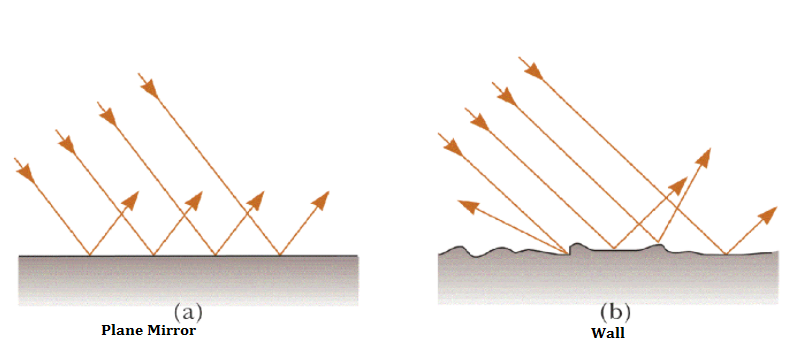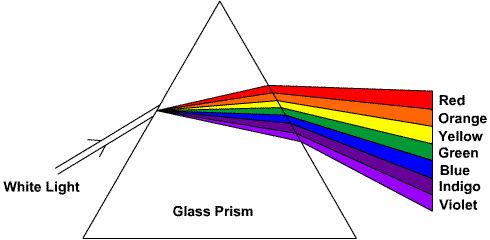7th Grade > Physics
LIGHT MCQs
Total Questions : 117
| Page 6 of 12 pages
:
Concept: 1 Mark
Reason: 1 Mark
Whenever an object is viewed through a mirror, its mirror image is formed.
The mirror image of AMBULANCE is written on the vehicle because any person who is driving ahead of the ambulance will instantly identify the vehicle as an ambulance because the image formed in the rear view will read as "AMBULANCE".

:
Converging property with diagram: 1.5 Marks
Diverging property with diagram: 1.5 Marks
If parallel rays of light fall on a convex lens they converge when passing through and meet at a point on the other side. That's why the convex lens is known as a converging lens.
If parallel rays of light fall on a concave lens they diverge as they pass through the lens never to meet at a point.That's why we call them diverging lens.

:
Shiny Objects as Mirrors: 1.5 Marks
Walls as Mirrors: 1.5 Marks
In mirrors, when light falls on them, the reflected rays are still parallel since the shiny surfaces are very smooth and hence the reflected rays of light reach our eyes. Mirrors also reflect most of the light that falls on them. That's why we can see objects through the mirror or any shining surface.
Walls surface are rough. When light falls on rough surfaces, the reflection of light is much more dispersed and irregular. Rough surfaces like walls reflect only a part of the light that falls on them. Since all the reflected rays do not reach our eyes, we cannot see any image and due to this, walls do not act asmirrors.

:
How we see anything: 2Marks
Luminous objects: 1 Mark
Sometimes light from the Sun can be seen passing through clouds and the raysappear to bestraight lines. After light isreflected off of an object, such as a tree or a book, it still travels in straight lines, but in a differentdirection because of reflection. If the light enters our eyes, we see the object (i.e. our eyes can detect light). For example, if light from the Sun strikes an object, the light is usually reflected off of that object.We can see things because of the light that is reflected off of them. If light is not reflected into our eyes, we do not see them.
![Click to Enlarge Image Do We See All Objects Due To Reflected Light? [3 MARKS]](https://lakshyaeducation.in/quizpics/quiz/content_howdoweseethings.jpg)
There are objects which give their own light such as sun, fire, bulb etc. That's why we see them. These objects are known as luminous objects.
:
Difference :3 Marks
Forming Images : 2 Marks
(i) Real images are those images which are formed on the screen or those images which can be obtained on the screen.
(i) Virtual images are those images which cannot be obtained on the screen.
(ii) Real images are formed when light rays actually meet at a point.
(ii) In the formation of a virtual image, light rays do not actually meet but appears to meet.
(iii) A real image is always inverted.
(iii) Virtual image is always erect.
Real images can be formed by a Concave mirror or Convex lens, by placing a screen behind the respective mirror or lens.
On the other hand, a virtual image can be produced by a concave lens or Convex mirror.
Answer: Option A. ->
reflection
:
A
:
A
The bouncing back of light from a shiny surface is called as reflection. Reflection always follows certain laws called the laws of reflection. The laws are as follows:
1. Angle of incidence is equal to the angle of reflection.
2. The incident ray, normal and the reflected ray lie in the same plane.
Answer: Option D. ->
dispersion
:
D
:
D
When light rays are passed through a prism, the phenomenon that happens is known as the dispersion of light. The splitting of white light into its constituent colors is known as dispersion.
Answer: Option A. ->
White
:
A
:
A
When white light is passed through a prism, it splits into seven different colours namely, red, orange, yellow, green, blue, indigo and violet. If we do the reverse, that is mix the beams of light of all colour, white light is obtained.

![Click to Enlarge Image State The Laws Of Reflection. [2 MARKS]](https://lakshyaeducation.in/quizpics/quiz/content_reflection.png)
















